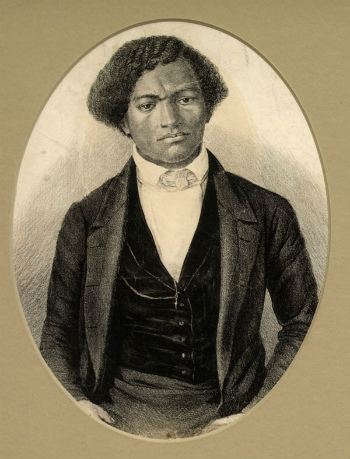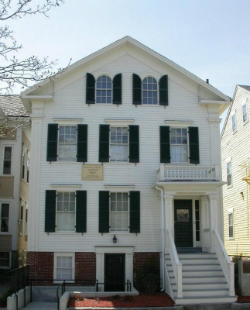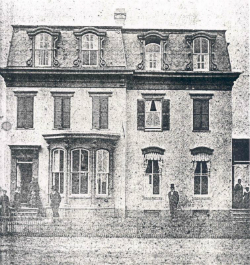New Awardees, Frederick Douglass 200 Bicentennial: Michelle Obama, Harry Belafonte, More
Last edited Wed Aug 15, 2018, 02:18 PM - Edit history (1)
The Frederick Douglass 200. On the occasion of his bicentennial, a list of 200 people who best embody the spirit and work of Frederick Douglass, one of the most influential figures in history. The Guardian, Aug. 15, 2018.
This year is Frederick Douglass’s Bicentennial celebration. After escaping slavery at the age of 20, Douglass went on to become one of America's most celebrated abolitionists - tirelessly campaigning against slavery. Beyond his abolitionist work, Douglass was also a politician, writer, feminist, educator, entrepreneur and diplomat.
The Frederick Douglass 200 is a project to honor the impact of 200 living individuals who best embody the work and spirit of Douglass across those areas where he had such an impact - abolitionist, politician, writer, feminist, educator, entrepreneur and diplomat.
The FD200 has been curated and compiled by the Frederick Douglass Family Initiatives & the Antiracist Research & Policy Center at American University in Washington DC, and the Guardian is pleased to partner with them to publish this list.
Each week, between now and November, we will publish a list of 10 new people who have joined the FD200. All awardees will be honored at the Library of Congress in Washington DC on Douglass's next birthday, February 14, 2019.
- Kenneth Morris, great-great-great grandson of Frederick Douglass
Those added to the FD200 this week... Eloisa Garcia Tamez, Harry Belafonte, Michelle Obama, Viet Thanh Nguyen, Haunani-Kay Trask, Cristina Jimenez, Nancy Mercado, Linda Sarsour , Noam Chomsky and Katrina Vanden Heuvel. New names announced every Thursday.
The Abolitionists: Those organizing and speaking out against injustice, often times at risk of their careers or even their own lives. The risk of Douglass being re-enslaved did not stop him from becoming America’s most influential Black male abolitionist.
William Barber, National Poor People's Campaign, co-chair. The Rev William Barber is the co-chair of the National Poor People's Campaign, a political movement centered on combating poverty, racism, the economy of war and environmental degradation. He also sits on the National Board for the NAACP.
Patrisse Cullors, Black Lives Matter, co-founder, Patrisse is a co-founder of the Black Lives Matter movement, and has worked to address issues of police brutality and mass incarceration. She is the executive director of the Coalition to End Sherrif Violence in Jails and the co-founder of Dignity and Power Now.
Read More, https://www.theguardian.com/commentisfree/ng-interactive/2018/jul/05/the-frederick-douglass-200

*FREDERICK DOUGLASS BICENTENNIAL, CELEBRATE! NPS, National Park Service
https://www.nps.gov/frdo/learn/historyculture/frederickdouglass.htm
In his journey from captive slave to internationally renowned activist, Frederick Douglass (1818-1895) has been a source of inspiration and hope for millions. His brilliant words and brave actions continue to shape the ways that we think about race, democracy, and the meaning of freedom.

A drawing of Frederick Douglass as a young man.
Frederick Augustus Washington Bailey was born into slavery on the Eastern Shore of Maryland in February 1818. He had a difficult family life. He barely knew his mother, who lived on a different plantation and died when he was a young child. He never discovered the identity of his father. When he turned eight years old, his slaveowner hired him out to work as a body servant in Baltimore.
At an early age, Frederick realized there was a connection between literacy and freedom. Not allowed to attend school, he taught himself to read and write in the streets of Baltimore. At twelve, he bought a book called The Columbian Orator. It was a collection of revolutionary speeches, debates, and writings on natural rights. When Frederick was fifteen, his slaveowner sent him back to the Eastern Shore to labor as a fieldhand. Frederick rebelled intensely. He educated other slaves, physically fought back against a "slave-breaker," and plotted an unsuccessful escape.
Frustrated, his slaveowner returned him to Baltimore. This time, Frederick met a young free black woman named Anna Murray, who agreed to help him escape. On September 3, 1838, he disguised himself as a sailor and boarded a northbound train, using money from Anna to pay for his ticket. In less than 24 hours, Frederick arrived in New York City and declared himself free. He had successfully escaped from slavery.
The Abolitionist Movement: After escaping from slavery, Frederick married Anna. They decided that New York City was not a safe place for Frederick to remain as a fugitive, so they settled in New Bedford, Massachusetts. There, they adopted the last name "Douglass" and they started their family, which would eventually grow to include five children: Rosetta, Lewis, Frederick, Charles, and Annie. After finding employment as a laborer, Douglass began to attend abolitionist meetings and speak about his experiences in slavery. He soon gained a reputation as an orator, landing a job as an agent for the Massachusetts Anti-Slavery Society. The job took him on speaking tours across the North and Midwest.
Douglass's fame as an orator increased as he traveled. Still, some of his audiences suspected he was not truly a fugitive slave. In 1845, he published his first autobiography, Narrative of the Life of Frederick Douglass, to lay those doubts to rest. The narrative gave a clear record of names and places from his enslavement. To avoid being captured and re-enslaved, Douglass traveled overseas. For almost two years, he gave speeches and sold copies of his narrative in England, Ireland, and Scotland. When abolitionists offered to purchase his freedom, Douglass accepted and returned home to the United States legally free. He relocated Anna and their children to Rochester, New York. -Read More at the Link.

After escaping, Frederick Douglass first lived at the Nathan and Polly Johnson house in New Bedford, Massachusetts. The home is now a National Historic Landmark.

Frederick Douglass standing in front of his house on Capitol Hill, ca. 1870s. He later purchased and moved to the suburban estate in Anacostia that he named Cedar Hill.
Cedar Hill, Frederick Douglass Home in Washington, D.C.
Rhiannon12866
(205,467 posts)Of course, the obvious question is whether Trump will show up to meet the great man himself! ![]()
![]()
appalachiablue
(41,140 posts)engaged in making a better world. When will our leader meet Mr. Douglass? Lol. He could at least visit "Cedar Hill," the last Wash. DC home of the great abolitionist and statesman.